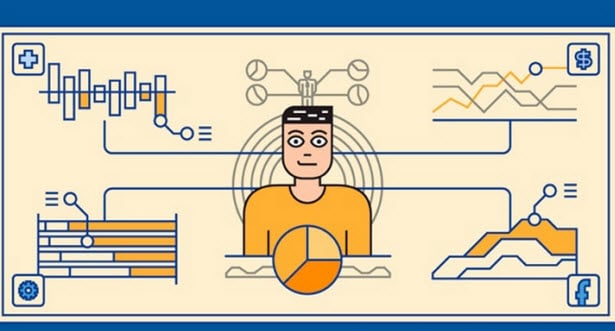Sponsored
Business Models, Information Technology, and the Company of the Future
Provided byBBVA
Information technology has, of course, played a major role in reshaping business models over the past 20 years.
The basic social conventions of the preceding Industrial Era were all built around the notion that people physically moved in response to needs. For instance, if you wanted to buy something, you went to a store. If you wanted to build something, you worked in a factory.
But in the Internet economy, value creation doesn’t require that kind of physical movement, and income accumulates not in the form of cash, but in terms of clicks.
u2028Read the full article provided by BBVA OpenMind:
Business Models, Information Technology, and the Company of the Future
By changing the focus of innovation from atoms to bits, and from hardware to software, IT has dramatically accelerated the process of new business-model creation. Developments such the convergence of virtual and physical identities, models and reality, and those atoms and bits are likely to change the nature of the firm and, with it, the essence of innovation.
Today, a large—and increasing—percentage of payments are made electronically. These payments are recorded and processed to obtain a complete picture of the consumer’s finances. Virtual identities are converging with real identities, more generally, because of the increased use of mobile devices, sensors, and cloud computing. They generate a rich digital footprint that enables the replication of a growing number of consumer activities, ranging from physical movements to transactions and communication.
By integrating data from multiple sources and developing models that can predict their future behaviors with increasing precision, big data approaches are able to test how customers might react to a prospective offer without actually making that offer. Meanwhile, people spend an increasing percentage of their time in the virtual world, where customized information products and services can be produced by software.

As for “atoms,” manufacturing is increasingly driven by software that makes it possible for physical products as well to be more responsive to customer demands. Robots can be programmed to support flexible—but still low-cost—manufacturing processes, while mass customization allows companies to create customer-responsive products. As a result, low-cost manufacturing of fully customized products will likely become the norm rather than the exception.
IT will not only accelerate the process of business-model development, it will lead, over time, to a substantial qualitative change. The combined effect of mobile technologies, wearable devices and sensors, cloud computing, and big data technologies will sharpen the structure of future business models.
Three technologies will play a particularly important role in the use of IT:
- Customer-intimacy agents will be customers’ digital representatives in the marketplace, using data to find and solicit solutions that will make them better off.
- Value-chain coordinators will match supply and demand, assemble customized solutions, and engage in electronic customer data-driven innovation.
- Producers will increasingly engage in marketplace selling and data-driven innovation.
Finally, traditional forms of innovation will continue to be important and serve as key differentiators. First, the underlying business models will require continuous innovation, including traditional approaches. In addition, breakthrough products will probably continue to require traditional forms of innovation as well.
Keep Reading
Most Popular
Large language models can do jaw-dropping things. But nobody knows exactly why.
And that's a problem. Figuring it out is one of the biggest scientific puzzles of our time and a crucial step towards controlling more powerful future models.
How scientists traced a mysterious covid case back to six toilets
When wastewater surveillance turns into a hunt for a single infected individual, the ethics get tricky.
The problem with plug-in hybrids? Their drivers.
Plug-in hybrids are often sold as a transition to EVs, but new data from Europe shows we’re still underestimating the emissions they produce.
Google DeepMind’s new generative model makes Super Mario–like games from scratch
Genie learns how to control games by watching hours and hours of video. It could help train next-gen robots too.
Stay connected
Get the latest updates from
MIT Technology Review
Discover special offers, top stories, upcoming events, and more.